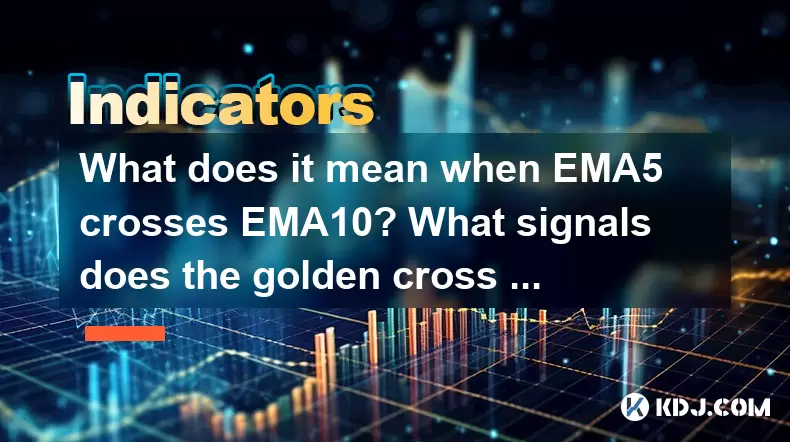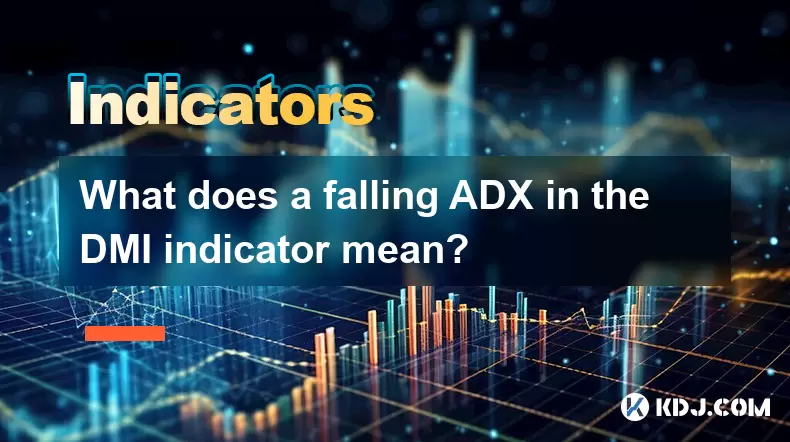-
 Bitcoin
Bitcoin $116700
0.24% -
 Ethereum
Ethereum $3973
4.34% -
 XRP
XRP $3.283
7.68% -
 Tether USDt
Tether USDt $1.000
0.01% -
 BNB
BNB $789.8
2.27% -
 Solana
Solana $176.2
3.31% -
 USDC
USDC $0.9999
0.00% -
 Dogecoin
Dogecoin $0.2238
5.14% -
 TRON
TRON $0.3389
-0.51% -
 Cardano
Cardano $0.7907
4.03% -
 Stellar
Stellar $0.4527
10.02% -
 Hyperliquid
Hyperliquid $41.07
4.27% -
 Sui
Sui $3.794
1.77% -
 Chainlink
Chainlink $19.49
10.40% -
 Bitcoin Cash
Bitcoin Cash $580.9
0.74% -
 Hedera
Hedera $0.2617
4.32% -
 Avalanche
Avalanche $23.41
3.67% -
 Ethena USDe
Ethena USDe $1.001
-0.03% -
 Litecoin
Litecoin $122.4
1.38% -
 Toncoin
Toncoin $3.364
1.49% -
 UNUS SED LEO
UNUS SED LEO $8.988
0.37% -
 Shiba Inu
Shiba Inu $0.00001295
2.82% -
 Uniswap
Uniswap $10.62
5.75% -
 Polkadot
Polkadot $3.922
4.46% -
 Dai
Dai $1.000
0.01% -
 Bitget Token
Bitget Token $4.494
2.15% -
 Monero
Monero $268.0
-1.30% -
 Cronos
Cronos $0.1523
3.68% -
 Pepe
Pepe $0.00001127
4.43% -
 Aave
Aave $285.4
4.85%
What does it mean when EMA5 crosses EMA10? What signals does the golden cross EMA20 reveal?
EMA5 and EMA10 crossings signal potential market momentum shifts; a golden cross with EMA20 indicates a strong bullish trend in cryptocurrency trading.
Jun 01, 2025 at 11:22 am

When discussing technical analysis in the cryptocurrency market, two frequently used indicators are the Exponential Moving Averages (EMAs). Specifically, the crossing of EMA5 and EMA10 can provide traders with important signals about market trends. Similarly, the golden cross involving EMA20 is a significant event for many traders. Let's delve into what these crossings signify and how they can be used to inform trading decisions.
Understanding EMA5 and EMA10 Crossings
The EMA5 and EMA10 are short-term moving averages that respond quickly to price changes. When EMA5 crosses EMA10, it can signal a potential shift in market momentum. There are two types of crossings: a bullish crossover and a bearish crossover.
Bullish Crossover: This occurs when EMA5 moves above EMA10. It suggests that the short-term price trend is gaining strength and could be a signal to buy or enter a long position. Traders often see this as an indication that the market sentiment is turning positive.
Bearish Crossover: Conversely, when EMA5 moves below EMA10, it indicates that the short-term price trend is weakening. This could be a signal to sell or enter a short position. It suggests that the market sentiment might be turning negative.
Practical Application of EMA5 and EMA10 Crossings
To effectively use EMA5 and EMA10 crossings in your trading strategy, follow these steps:
Add EMA5 and EMA10 to Your Chart: Open your trading platform and add both EMA5 and EMA10 to your chart. Most platforms allow you to do this easily by selecting the indicators and setting the periods to 5 and 10, respectively.
Monitor for Crossings: Keep an eye on the chart for instances where EMA5 crosses EMA10. Use alerts if your platform supports them to be notified of these events.
Confirm with Other Indicators: While the crossover can be a strong signal, it's advisable to confirm it with other technical indicators like the Relative Strength Index (RSI) or the Moving Average Convergence Divergence (MACD) to increase the reliability of your trading decision.
Execute Trades: Once a crossover is confirmed, decide whether to buy (on a bullish crossover) or sell (on a bearish crossover). Set your entry and exit points, and manage your risk with stop-loss orders.
The Golden Cross Involving EMA20
The golden cross is a term used when a shorter-term moving average crosses above a longer-term moving average, signaling a potential bullish trend. In the context of EMA20, a golden cross typically occurs when a shorter-term moving average, such as EMA10 or EMA5, crosses above EMA20.
Golden Cross Signal: When EMA10 or EMA5 crosses above EMA20, it is considered a strong bullish signal. It suggests that the market is entering a period of sustained upward movement. Traders often use this signal to enter long positions or hold onto existing positions.
Significance of EMA20: The EMA20 is considered a medium-term moving average. Its crossing with shorter-term averages like EMA5 or EMA10 is seen as more significant than shorter-term crossovers because it indicates a longer-lasting trend change.
Using the Golden Cross with EMA20 in Trading
To leverage the golden cross involving EMA20 in your trading strategy, consider the following steps:
Set Up Your Chart: Add EMA5, EMA10, and EMA20 to your chart. Ensure that the periods are set correctly to 5, 10, and 20, respectively.
Watch for the Golden Cross: Monitor the chart for instances where EMA5 or EMA10 crosses above EMA20. This event is the golden cross.
Confirm the Signal: As with any trading signal, it's beneficial to confirm the golden cross with other technical indicators. Look at the RSI, MACD, or volume to ensure the trend is strong and likely to continue.
Enter Long Positions: Once the golden cross is confirmed, consider entering a long position. Set your entry and exit points carefully, and use stop-loss orders to manage risk.
The Death Cross and EMA20
While the golden cross signals a bullish trend, the death cross is its bearish counterpart. It occurs when a shorter-term moving average, such as EMA5 or EMA10, crosses below EMA20.
Death Cross Signal: When EMA5 or EMA10 crosses below EMA20, it is seen as a strong bearish signal. It suggests that the market is entering a period of sustained downward movement. Traders often use this signal to exit long positions or enter short positions.
Using the Death Cross: Similar to the golden cross, the death cross should be confirmed with other indicators before taking action. If confirmed, traders might consider selling their holdings or entering short positions.
Practical Example of EMA Crossings in Cryptocurrency Trading
Let's consider a hypothetical example of how EMA5, EMA10, and EMA20 crossings might play out in the cryptocurrency market:
Scenario: You are monitoring Bitcoin (BTC) on a daily chart. You notice that EMA5 has just crossed above EMA10, signaling a potential bullish trend.
Confirmation: You check the RSI, which is at 60 and rising, indicating strong momentum. The MACD also shows a bullish crossover.
Action: Based on these signals, you decide to enter a long position on BTC. You set your entry price at the current market rate, with a stop-loss order slightly below the recent low to manage risk.
Golden Cross Occurs: A few days later, EMA10 crosses above EMA20, confirming a golden cross. This strengthens your bullish outlook, and you decide to hold your position, potentially increasing your exposure.
Death Cross Occurs: After a period of upward movement, EMA5 crosses below EMA10, and then EMA10 crosses below EMA20, signaling a death cross. You exit your long position to minimize losses.
Frequently Asked Questions
Q: Can EMA crossings be used for all cryptocurrencies?
A: Yes, EMA crossings can be applied to any cryptocurrency. However, the effectiveness may vary depending on the liquidity and volatility of the specific cryptocurrency. More liquid and less volatile cryptocurrencies tend to provide more reliable signals.
Q: How often should I check for EMA crossings?
A: The frequency of checking for EMA crossings depends on your trading style. Day traders might check multiple times a day, while swing traders might check daily or weekly. Set up alerts on your trading platform to be notified of significant crossings.
Q: Are EMA crossings reliable on their own?
A: While EMA crossings can provide valuable insights, they are most effective when used in conjunction with other technical indicators. Relying solely on EMA crossings can lead to false signals, so it's important to confirm them with other tools like RSI, MACD, or volume analysis.
Q: How do I set up EMA indicators on a trading platform?
A: To set up EMA indicators on a trading platform, follow these steps:
- Open your trading platform and navigate to the chart of the cryptocurrency you're interested in.
- Select 'Indicators' or a similar option from the menu.
- Choose 'Moving Averages' and then select 'Exponential Moving Average' (EMA).
- Set the period to 5 for EMA5, 10 for EMA10, and 20 for EMA20.
- Apply the indicators to your chart, and they will appear as lines on the price chart.
Disclaimer:info@kdj.com
The information provided is not trading advice. kdj.com does not assume any responsibility for any investments made based on the information provided in this article. Cryptocurrencies are highly volatile and it is highly recommended that you invest with caution after thorough research!
If you believe that the content used on this website infringes your copyright, please contact us immediately (info@kdj.com) and we will delete it promptly.
- Coinbase, Cosmos, and dYdX: Navigating the Crypto Currents
- 2025-08-09 06:30:16
- BNB Price, Altcoins, and Predictions: What's the Buzz?
- 2025-08-09 06:30:16
- Crypto Presale Projects Primed for Gains in 2025: A New Yorker's Take
- 2025-08-09 06:50:15
- Ruvi AI: The Millionaire Maker Poised for a Price Spike?
- 2025-08-09 06:50:15
- MAGACOIN FINANCE: August 2025's Standout Presale - Is it the Next Big Thing in Crypto Finance?
- 2025-08-09 06:55:27
- Token Buybacks, Onchain Data, and Developers: What's Buzzing in Crypto
- 2025-08-09 05:10:15
Related knowledge

When the J line in the KDJ indicator suddenly turns downward after being continuously overbought, does it indicate a top?
Aug 09,2025 at 06:35am
Understanding the KDJ Indicator and Its ComponentsThe KDJ indicator is a momentum oscillator widely used in cryptocurrency technical analysis to ident...

What does it mean when the TRIX indicator suddenly diverges downward after a long period of convergence?
Aug 09,2025 at 12:56am
Understanding the TRIX Indicator in Cryptocurrency TradingThe TRIX indicator, or Triple Exponential Average, is a momentum oscillator used in technica...

Why is the rise limited after a MACD bottoming divergence?
Aug 09,2025 at 12:07am
Understanding MACD Bottoming Divergence in Cryptocurrency TradingThe MACD (Moving Average Convergence Divergence) is a widely used technical indicator...

What does it mean when the OBV continues to rise but the price is trading sideways?
Aug 08,2025 at 10:35pm
Understanding On-Balance Volume (OBV)On-Balance Volume (OBV) is a technical indicator that uses volume flow to predict changes in stock or cryptocurre...

What does a falling ADX in the DMI indicator mean?
Aug 09,2025 at 03:16am
Understanding the ADX and DMI Indicator FrameworkThe DMI (Directional Movement Index) is a technical analysis tool developed by J. Welles Wilder to id...

What does a double top pattern on the Williams oscillator mean?
Aug 09,2025 at 02:36am
Understanding the Williams %R OscillatorThe Williams %R oscillator is a momentum indicator developed by Larry Williams to identify overbought and over...

When the J line in the KDJ indicator suddenly turns downward after being continuously overbought, does it indicate a top?
Aug 09,2025 at 06:35am
Understanding the KDJ Indicator and Its ComponentsThe KDJ indicator is a momentum oscillator widely used in cryptocurrency technical analysis to ident...

What does it mean when the TRIX indicator suddenly diverges downward after a long period of convergence?
Aug 09,2025 at 12:56am
Understanding the TRIX Indicator in Cryptocurrency TradingThe TRIX indicator, or Triple Exponential Average, is a momentum oscillator used in technica...

Why is the rise limited after a MACD bottoming divergence?
Aug 09,2025 at 12:07am
Understanding MACD Bottoming Divergence in Cryptocurrency TradingThe MACD (Moving Average Convergence Divergence) is a widely used technical indicator...

What does it mean when the OBV continues to rise but the price is trading sideways?
Aug 08,2025 at 10:35pm
Understanding On-Balance Volume (OBV)On-Balance Volume (OBV) is a technical indicator that uses volume flow to predict changes in stock or cryptocurre...

What does a falling ADX in the DMI indicator mean?
Aug 09,2025 at 03:16am
Understanding the ADX and DMI Indicator FrameworkThe DMI (Directional Movement Index) is a technical analysis tool developed by J. Welles Wilder to id...

What does a double top pattern on the Williams oscillator mean?
Aug 09,2025 at 02:36am
Understanding the Williams %R OscillatorThe Williams %R oscillator is a momentum indicator developed by Larry Williams to identify overbought and over...
See all articles

























































































